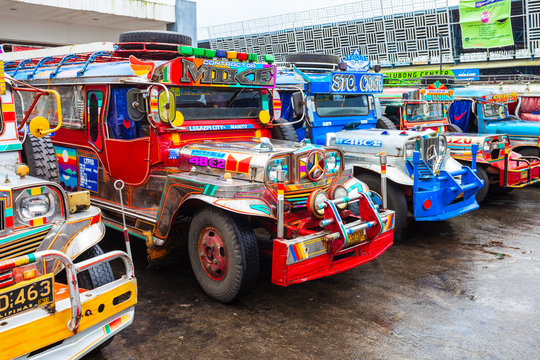If you’ve ever visited the Philippines, there’s one iconic sight that’s hard to miss: the jeepney.
These colorful, elaborately decorated vehicles are more than just public transportation, they are a cultural symbol deeply woven into the fabric of Filipino life since the mid-20th century.
The Origins of a Street Legend
The story of the jeepney began after World War II, when American troops left behind hundreds of Willys military jeeps in the Philippines. Faced with an urgent need for public transport, Filipinos repurposed these vehicles and modified them.
They extended the bodies, added roofs, and redesigned the interiors to carry more passengers. Thus was born the “jeepney”—a blend of “jeep” and “jitney,” the latter referring to low-cost public transport.
Interestingly, some also believe the name “jeepney” comes from the cramped passenger experience—sitting knee-to-knee, a term locals jokingly use to describe the close quarters.
Distinct Features and Visual Appeal
Jeepneys are famous for their eye-catching designs. Each one can be seen as a moving canvas. Owners and drivers adorn their vehicles with paintings of religious figures, movie characters, basketball stars, natural landscapes, and even portraits of family members.
LED lights, quirky horns, metallic ornaments, and fringed curtains add to their unique charm. Many are even equipped with large sound systems, and occasionally, a karaoke microphone.
Social and Economic Role
Beneath their festive appearance, jeepneys serve a crucial function in daily life. With seating capacities ranging from 12 to 25 passengers, they are the main mode of transportation for millions, especially in urban and semi-urban areas. Their affordability makes them the top choice for many commuters.
Beyond transport, the jeepney industry supports thousands of livelihoods—from drivers and mechanics to vehicle decorators. For some families, driving a jeepney is even a generational tradition, passed down through the years.
A Symbol of Community and Togetherness
The jeepney is more than just a vehicle—it’s a miniature social space. During rides, passengers often engage in conversations, share laughter, and sometimes even sing together.
One charming cultural practice is the way passengers pay their fare: by passing it hand-to-hand from the back to the driver, a form of communal cooperation unique to the jeepney experience.
Local Innovation: The Karatig Jeepney and the Karaoke Phenomenon
Some regions have developed their own unique jeepney variations. In Malolos, Bulacan, for example, there’s the jeepney karatig, a smaller version that accommodates around 10–15 passengers. Its route passes historical landmarks such as the Barasoain Church and Malolos Cathedral.
Meanwhile, on the Morayta–Divisoria route, you might find jeepneys equipped with karaoke machines. Passengers are free to sing along during the ride—a uniquely Filipino blend of transportation and entertainment.
Jeepneys on the World Stage
The popularity of the jeepney has transcended national borders. It was featured in Perfumed Nightmare, the acclaimed film by Kidlat Tahimik, and showcased at the 1964 New York World’s Fair.
Meanwhile, to promote Furiosa: A Mad Max Saga, a jeepney was modified in a post-apocalyptic style and driven around Manila, demonstrating the vehicle’s lasting cultural appeal and adaptability.




















